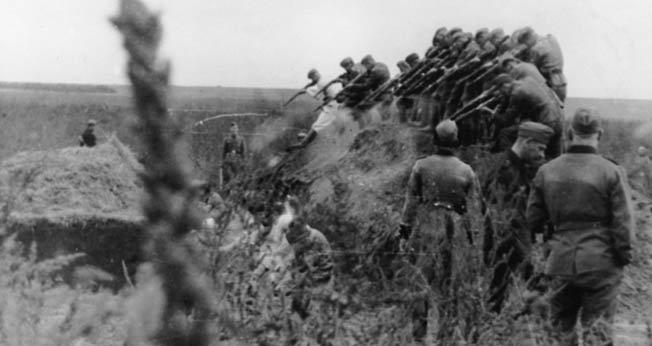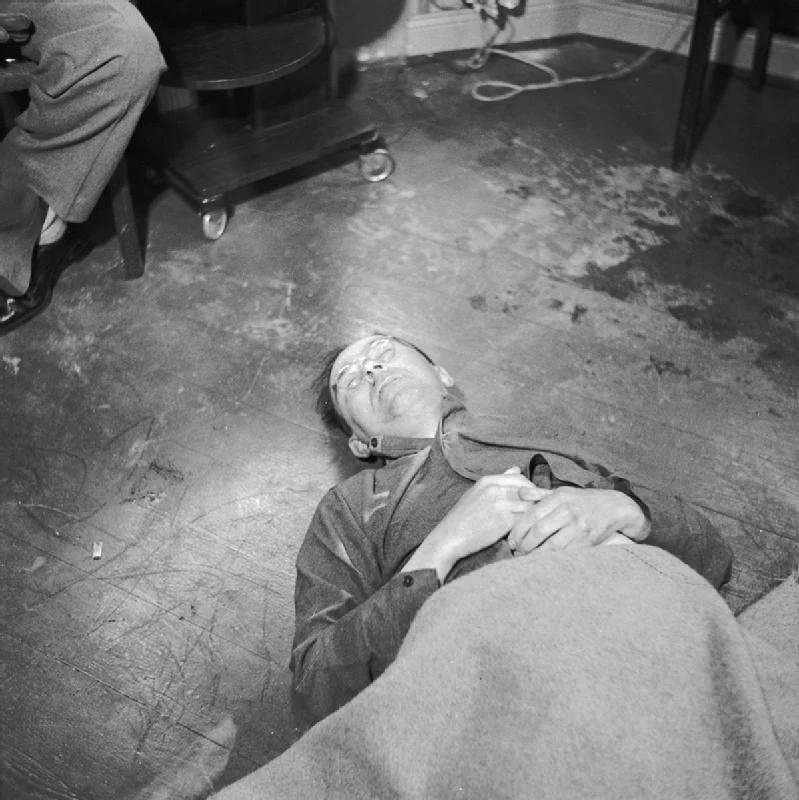Heinrich Himmler
Heinrich Luitpold Himmler was the Reichsführer of the Schutzstaffel (Protection Squadron; SS), a leading member of the Nazi Party of Germany, and one of the most powerful men in Nazi Germany, primarily known for being a main architect of the Holocaust
Himmler joined the Nazi Party in August 1923, receiving party number 14303. As a member of Röhm's paramilitary unit, Himmler was involved in the Beer Hall Putsch—an unsuccessful attempt by Hitler and the Nazi Party to seize power in Munich. This event would set Himmler on a life of politics. He was questioned by the police about his role in the putsch, but was not charged because of insufficient evidence. However, he lost his job, was unable to find employment as a farm manager, and had to move in with his parents in Munich. Frustrated by these failures, he became ever more irritable, aggressive, and opinionated, alienating both friends and family members.
In 1924, Himmler, while searching for a world view, came to abandon Catholicism and focused on the occult and in antisemitism. Germanic mythology, reinforced by occult ideas, became a religion for him. Himmler found the Nazi Party appealing because its political positions agreed with his own views. Initially, he was not swept up by Hitler's charisma or the cult of Führer worship. However, as he learned more about Hitler through his reading, he began to regard him as a useful face of the party, and he later admired and even worshipped him. To consolidate and advance his own position in the Nazi Party, Himmler took advantage of the disarray in the party following Hitler's arrest in the wake of the Beer Hall Putsch. From mid-1924 he worked under Gregor Strasser as a party secretary and propaganda assistant. Travelling all over Bavaria agitating for the party, he gave speeches and distributed literature. Placed in charge of the party office in Lower Bavaria by Strasser from late 1924, he was responsible for integrating the area's membership with the Nazi Party under Hitler when the party was re-founded in February 1925.
Upon the resignation of SS commander Erhard Heiden in January 1929, Himmler assumed the position of Reichsführer-SS with Hitler's approval; he still carried out his duties at propaganda headquarters. One of his first responsibilities was to organise SS participants at the Nuremberg Rally that September. Over the next year, Himmler grew the SS from a force of about 290 men to about 3,000. By 1930 Himmler had persuaded Hitler to run the SS as a separate organisation, although it was officially still subordinate to the SA
The Nazi Party's rise to power provided Himmler and the SS an unfettered opportunity to thrive. By 1933, the SS numbered 52,000 members.Strict membership requirements ensured that all members were of Hitler's Aryan Herrenvolk ("Aryan master race"). Applicants were vetted for Nordic qualities—in Himmler's words, "like a nursery gardener trying to reproduce a good old strain which has been adulterated and debased; we started from the principles of plant selection and then proceeded quite unashamedly to weed out the men whom we did not think we could use for the build-up of the SS." Few dared mention that by his own standards, Himmler did not meet his own ideals.
In March 1933, less than three months after the Nazis came to power, Himmler set up the first official concentration camp at Dachau. Hitler had stated that he did not want it to be just another prison or detention camp. Himmler appointed Theodor Eicke, a convicted felon and ardent Nazi, to run the camp in June 1933. Eicke devised a system that was used as a model for future camps throughout Germany. Its features included isolation of victims from the outside world, elaborate roll calls and work details, the use of force and executions to exact obedience, and a strict disciplinary code for the guards. Uniforms were issued for prisoners and guards alike; the guards' uniforms had a special Totenkopf insignia on their collars. By the end of 1934, Himmler took control of the camps under the aegis of the SS, creating a separate division, the SS-Totenkopfverbände
Theodor Eicke 1st Dachau Commandant
Totenkopf or Deaths Head used by the SS
Dachau Concentration camp
When Hitler and his army chiefs asked for a pretext for the invasion of Poland in 1939, Himmler, Heydrich, and Heinrich Müller masterminded and carried out a false flag project code-named Operation Himmler. German soldiers dressed in Polish uniforms undertook border skirmishes which deceptively suggested Polish aggression against Germany. The incidents were then used in Nazi propaganda to justify the invasion of Poland, the opening event of World War II. At the beginning of the war against Poland, Hitler authorised the killing of Polish civilians, including Jews and ethnic Poles. The Einsatzgruppen (SS task forces) had originally been formed by Heydrich to secure government papers and offices in areas taken over by Germany before World War II. Authorised by Hitler and under the direction of Himmler and Heydrich, the Einsatzgruppen units—now repurposed as death squads—followed the army into Poland, and by the end of 1939 they had murdered some 65,000 intellectuals and other civilians. Under Himmler's orders via the RSHA, these squads were also tasked with rounding up Jews and others for placement in ghettos and concentration camps.
Himmler was one of the main architects of the Holocaust, using his deep belief in the racist Nazi ideology to justify the murder of millions of victims. Hitler, Himmler, and Heydrich designed the Holocaust during a period of intensive meetings and exchanges in April–May 1942. The Nazis planned to kill Polish intellectuals and restrict non-Germans in the General Government and conquered territories to a fourth-grade education. They further wanted to breed a master race of racially pure Nordic Aryans in Germany. As a student of agriculture and a farmer, Himmler was acquainted with the principles of selective breeding, which he proposed to apply to humans. He believed that he could engineer the German populace, for example, through eugenics, to be Nordic in appearance within several decades of the end of the war.
The Einsatzgruppen in Poland
After the war Himmler was caught after going into hiding and on 23rd May he was examined by a Doctor. The doctor attempted to examine the inside of Himmler's mouth, but the prisoner was reluctant to open it and jerked his head away. Himmler then bit into a hidden potassium cyanide pill and collapsed onto the floor. He was dead within 15 minutes, despite efforts to expel the poison from his system. Shortly afterward, Himmler's body was buried in an unmarked grave near Lüneburg. The grave's location remains unknown
Dead Himmler
Watch the Peoples profile Himmler’s Biography
Born
Heinrich Luitpold Himmler
7 October 1900[1]
Munich, Kingdom of Bavaria, Germany
Died
23rd May 1945 (aged 44)
Lüneburg, Province of Hanover, Germany








